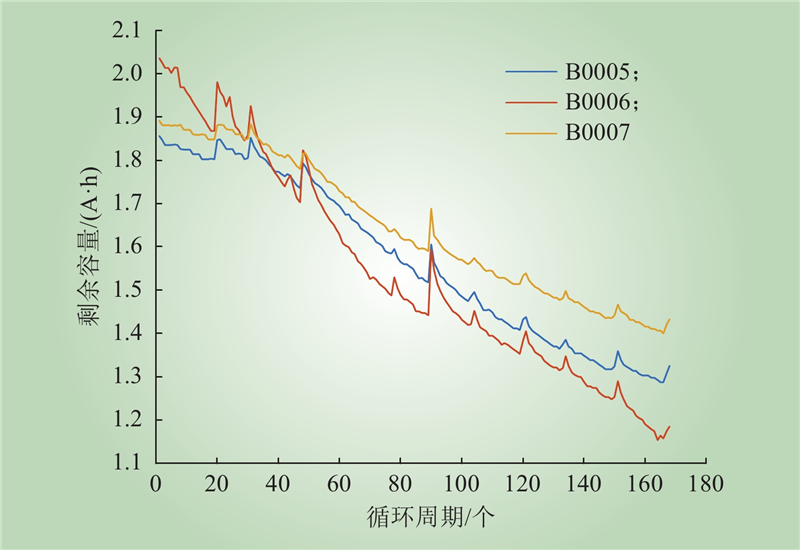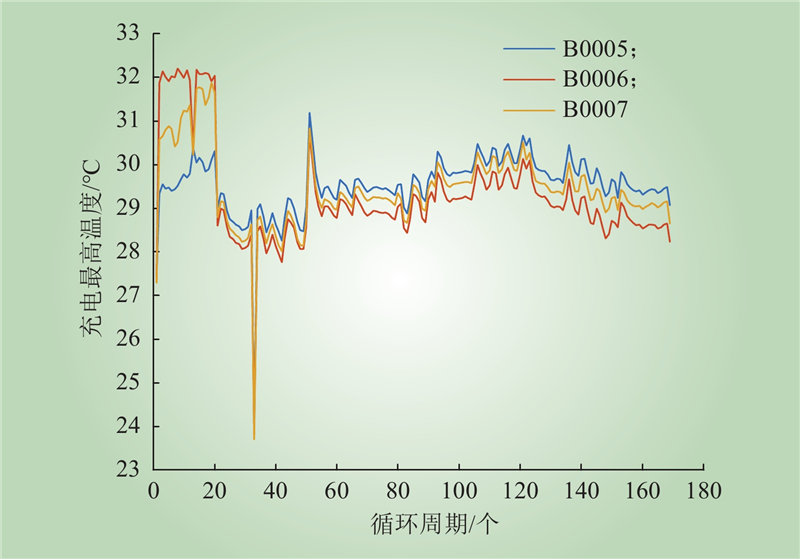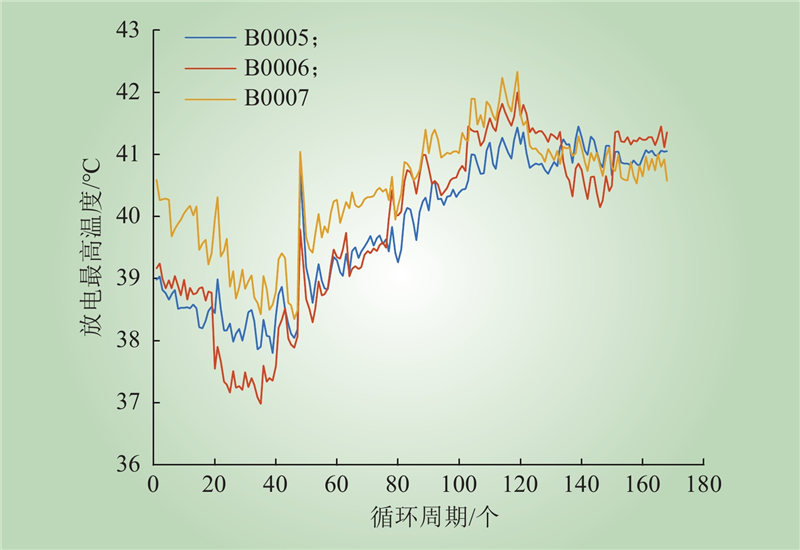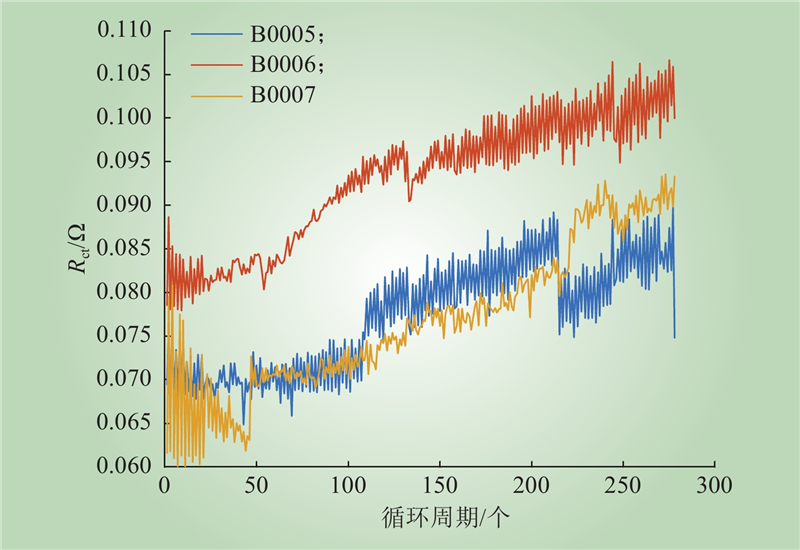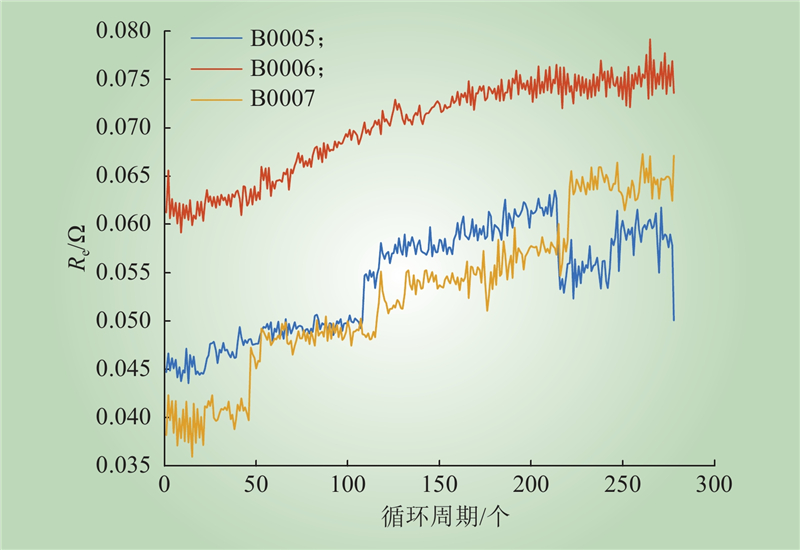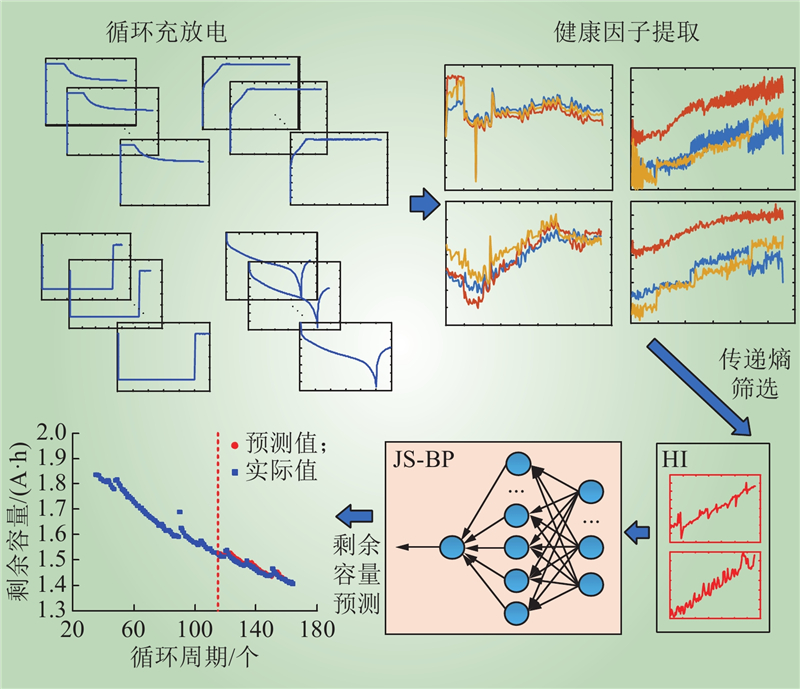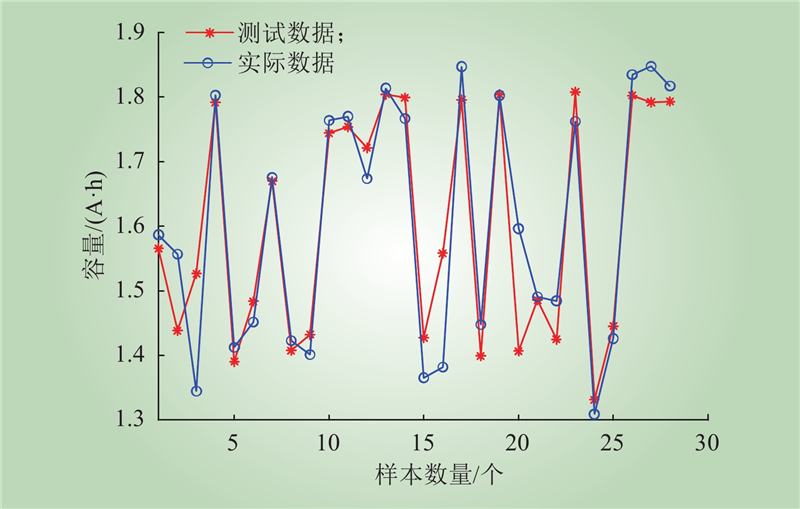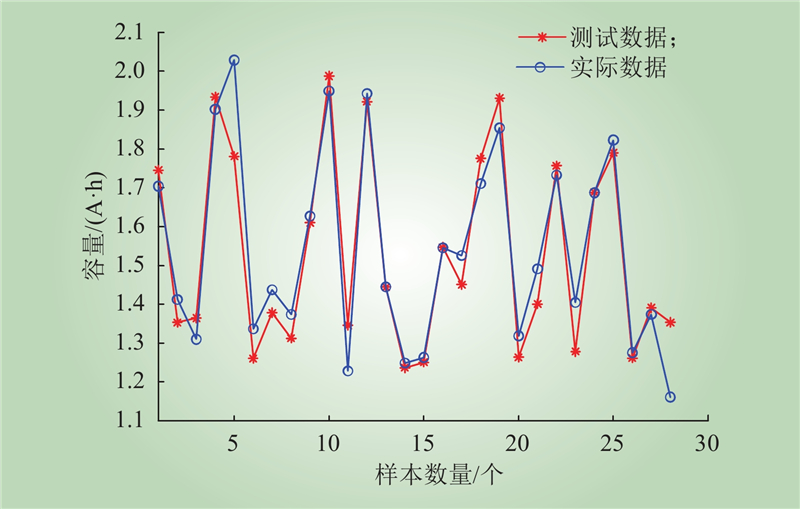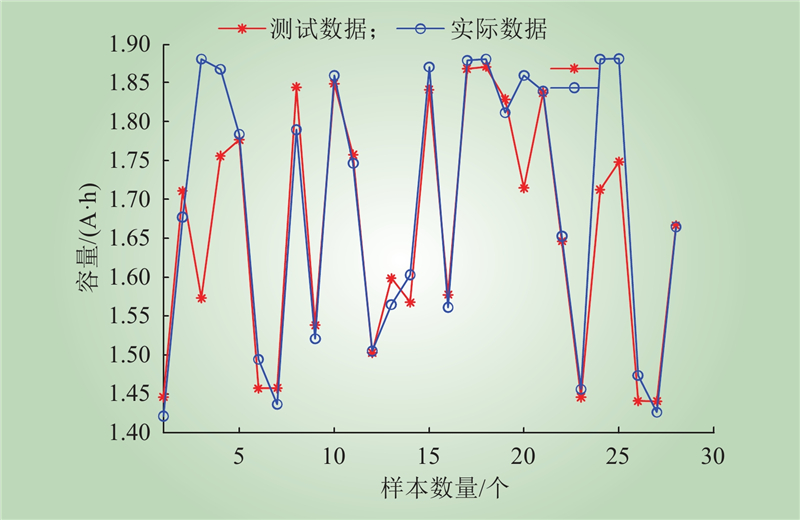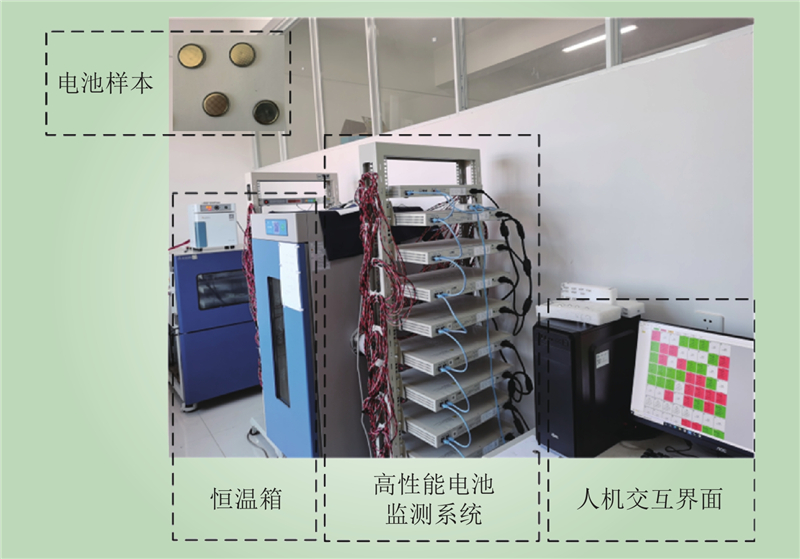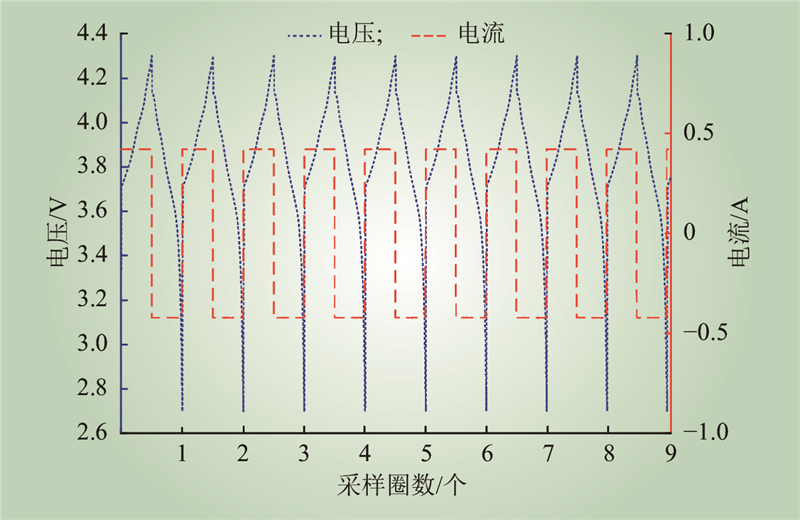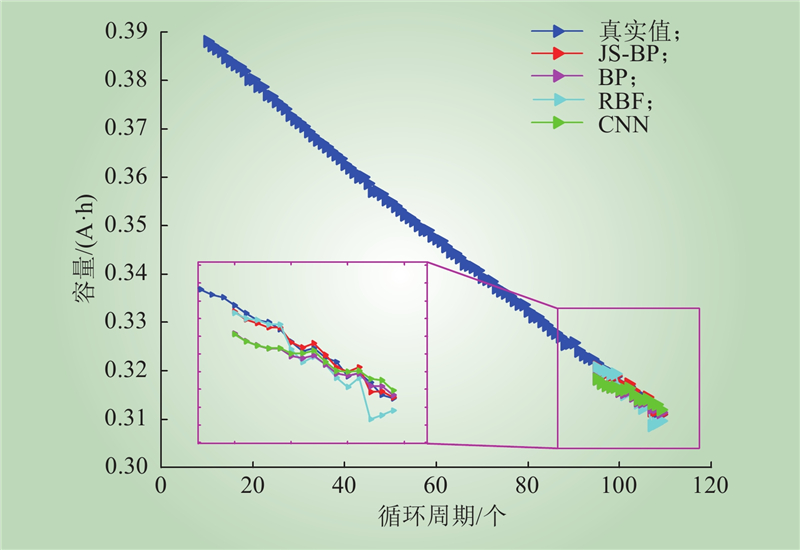| 1 |
郝刚, 金涛. 基于多尺度数据融合的锂电池健康状态评估[J]. 江苏大学学报(自然科学版), 2023, 44 (5): 524- 529.
|
|
HAO Gang, JIN Tao. Lithium battery health evaluation based on multi-scale data fusion[J]. Journal of Jiangsu University (Natural Science Edition), 2023, 44 (5): 524- 529.
|
| 2 |
周才杰, 汪玉洁, 李凯铨, 等. 基于灰色关联度分析-长短期记忆神经网络的锂离子电池健康状态估计[J]. 电工技术学报, 2022, 37 (23): 6065- 6073.
|
|
ZHOU Caijie, WANG Yujie, LI Kaiquan, et al. State of health estimation for lithium-ion battery based on gray correlation analysis and long short-term memory neural network[J]. Transactions of China Electrotechnical Society, 2022, 37 (23): 6065- 6073.
|
| 3 |
常泽宇, 张之琦, 张晓东, 等. 基于数据驱动的动力电池健康状态评估平台[J]. 储能科学与技术, 2022, 11 (6): 1847- 1853.
|
|
CHANG Zeyu, ZHANG Zhiqi, ZHANG Xiaodong, et al. A data-driven state of health(SOH)assessment platform for vehicle power batteries[J]. Energy Storage Science and Technology, 2022, 11 (6): 1847- 1853.
|
| 4 |
夏向阳, 邓子豪, 张嘉诚, 等. 基于动力锂离子电池健康状态的全寿命周期优化充电策略[J]. 电力科学与技术学报, 2022, 37 (6): 17- 24.
|
|
XIA Xiangyang, DENG Zihao, ZHANG Jiacheng, et al. Life cycle optimal charging strategy based on the SOH of power lithium ion battery[J]. Journal of Electric Power Science and Technology, 2022, 37 (6): 17- 24.
|
| 5 |
王兵, 汪宁, 吴冬, 等. 基于充电过程数据的锂离子电池健康状态评估方法[J]. 科学技术创新, 2022, (19): 44- 47.
DOI
|
|
WANG Bing, WANG Ning, WU Dong, et al. A health assessment method of lithium ion battery based on charging process data[J]. Scientific and Technological Innovation, 2022, (19): 44- 47.
DOI
|
| 6 |
邹红波, 柴延辉, 杨钦贺, 等. 基于混合ISSA-LSTM的锂离子电池剩余使用寿命预测[J]. 电力系统保护与控制, 2023, 51 (19): 21- 31.
|
|
ZOU Hongbo, CHAI Yanhui, YANG Qinhe, et al. Remaining useful life prediction of lithium-ion batteries based on hybrid ISSA-LSTM[J]. Power System Protection and Control, 2023, 51 (19): 21- 31.
|
| 7 |
岳家辉, 夏向阳, 吕崇耿, 等. 计及健康特征信息量的锂离子电池健康状态与剩余寿命预测研究[J]. 电力系统保护与控制, 2023, 51 (22): 74- 87.
|
|
YUE Jiahui, XIA Xiangyang, LÜ Chonggeng, et al. Research on the prediction of state of health and remaining useful life of lithium-ion batteries considering the amount of health factors information[J]. Power System Protection and Control, 2023, 51 (22): 74- 87.
|
| 8 |
彭昊, 罗正经, 夏向阳, 等. 储能系统多电池簇健康状态均衡控制策略[J]. 中国电力, 2024, 57 (6): 45- 52.
|
|
PENG Hao, LUO Zhengjing , XIA Xiangyang, et al. Health state equalization control strategy for multi-battery clusters in energy storage systems[J]. Electric Power, 2024, 57 (6): 45- 52.
|
| 9 |
王小聪, 郝正航, 陈卓. 基于DRSN-CW-LSTM网络的锂电池荷电状态预测[J]. 南方电网技术, 2024, 18 (2): 106- 114.
|
|
WANG Xiaocong, HAO Zhenghang, CHEN Zhuo. State of charge prediction of lithium-ion batteries based on DRSN-CW-LSTM network[J]. Southern Power System Technology, 2024, 18 (2): 106- 114.
|
| 10 |
熊庆, 邸振国, 汲胜昌. 锂离子电池健康状态估计及寿命预测研究进展综述[J/OL]. 高电压技术: 1–14[2024-02-22].https://doi.org/10.13336/j.1003-6520.hve.20221843
|
|
XIONG Qing, DI Zhenguo, JI Shengchang. Review on health state estimation and life prediction of lithium-ion batteries[J/OL]. High voltage technology: 1–14. [2024-02-22].https://doi.org/10.13336/j.1003-6520.hve.20221843.
|
| 11 |
陈息坤, 孙冬, 陈小虎. 锂离子电池建模及其荷电状态鲁棒估计[J]. 电工技术学报, 2015, 30 (15): 141- 147.
DOI
|
|
CHEN Xikun, SUN Dong, CHEN Xiaohu. Modelingand state of charge robust estimation for lithium-ion batteries[J]. Transactions of China Electrotechnical Society, 2015, 30 (15): 141- 147.
DOI
|
| 12 |
XIONG R, LI L L, TIAN J P. Towards a smarter battery management system: a critical review on battery state of health monitoring methods[J]. Journal of Power Sources, 2018, 405, 18- 29.
DOI
|
| 13 |
WEI J W, DONG G Z, CHEN Z H, et al. System state estimation and optimal energy control framework for multicell lithium-ion battery system[J]. Applied Energy, 2017, 187, 37- 49.
DOI
|
| 14 |
MICEA M V, UNGUREAN L, CÂRSTOIU G N, et al. Online state-of-health assessment for battery management systems[J]. IEEE Transactions on Instrumentation and Measurement, 2011, 60 (6): 1997- 2006.
DOI
|
| 15 |
SARMAH S B, KALITA P, GARG A, et al. A review of state of health estimation of energy storage systems: challenges and possible solutions for futuristic applications of Li-ion battery packs in electric vehicles[J]. Journal of Electrochemical Energy Conversion and Storage, 2019, 16(4): 040801.
|
| 16 |
金秀章, 丁续达, 赵立慧. 传递熵变量选择的非线性系统时序预测模型[J]. 中国电机工程学报, 2018, 38 (增刊1): 192- 200.
|
| 17 |
唐夏菲, 殷旭锋, 刘镂志, 等. 基于熵权—灰色关联变权重的有序用电决策方法[J]. 电力科学与技术学报, 2022, 37 (5): 164- 173.
|
|
TANG Xiafei, YIN Xufeng, LIU Louzhi, et al. The decision-making method of orderly power consumption based on variable weights given by the entropy weight-grey relation[J]. Journal of Electric Power Science and Technology, 2022, 37 (5): 164- 173.
|
| 18 |
刘康, 李彬, 薛阳, 等. 基于传递熵密度聚类的用户窃电识别方法[J]. 中国电机工程学报, 2022, 42 (20): 7535- 7546.
|
|
Liu Kang, Li Bin, Xue Yang, et al. User electric theft detection method based on transfer entropy density clustering[J]. Proceedings of the CSEE, 2022, 42 (20): 7535- 7546.
|
| 19 |
韦海燕, 陈孝杰, 吕治强, 等. 灰色神经网络模型在线估算锂离子电池SOH[J]. 电网技术, 2017, 41 (12): 4038- 4044.
|
|
WEI Haiyan, CHEN Xiaojie, LÜ Zhiqiang, et al. Online estimation of lithium-ion battery state of health using grey neural network[J]. Power System Technology, 2017, 41 (12): 4038- 4044.
|
| 20 |
戴彦文, 于艾清. 基于健康特征参数的CNN-LSTM&GRU组合锂电池SOH估计[J]. 储能科学与技术, 2022, 11 (5): 1641- 1649.
|
|
DAI Yanwen, YU Aiqing. Combined CNN-LSTM and GRU based health feature parameters for lithium-ion batteries SOH estimation[J]. Energy Storage Science and Technology, 2022, 11 (5): 1641- 1649.
|
| 21 |
焦自权, 范兴明, 张鑫, 等. 基于改进粒子滤波算法的锂离子电池状态跟踪与剩余使用寿命预测方法[J]. 电工技术学报, 2020, 35 (18): 3979- 3993.
|
|
JIAO Ziquan, FAN Xingming, ZHANG Xin, et al. State tracking and remaining useful life predictive method of Li-ion battery based on improved particle filter algorithm[J]. Transactions of China Electrotechnical Society, 2020, 35 (18): 3979- 3993.
|
| 22 |
盛腾威, 殷红, 彭珍瑞, 等. 基于JS-BP模型和JS散度的随机有限元模型修正[J]. 噪声与振动控制, 2022, 42 (1): 41- 47.
DOI
|
|
SHENG Tengwei, YIN Hong, PENG Zhenrui, et al. Stochastic finite element model updating based on JS-BP model and jensen-shannon divergence[J]. Noise and Vibration Control, 2022, 42 (1): 41- 47.
DOI
|


